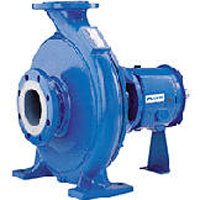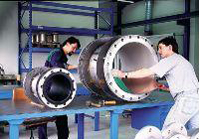Pipes & |
 |
Joints & Joint Materials: Joint means connection between the adjacent ends of two components including the means of sealing. There exist different types of joints, for example:
Joints & Joint Materials: Elastomeric joint ring: Flexible joint: In wall joint: Ogee Joint: Rebated joint: Steel banded joints - steel collar: Tongue and groove joint: |
|
|
rubber, polyurethane (PU) and two different fluoro plastics – polytetrafluoro ethylene (PTFE) and perfluoroalkoxy (PFA). Rubber liner exhibits good chemical resistance against water and alkaline solutions, but is not suited to oils or acids and fails to meet the hygienic requirements of the food and pharmaceutical industries. PFA liner is resistant to chemical and high temperatures (up to 180°C). |
Common types of pipe fittings include adapters, bulkhead fittings, caps, compression fittings, rigid couplings, flexible couplings, cross or 4-way fittings, 90 degree elbows, 45 degree elbows, reducing elbows, end bells, expansion joints or couplings, ferrules, flanges, nipples, offset fittings, plugs, concentric reducers, eccentric reducers, returns or traps, side outlet elbows, side outlet tees, standard tees, reducing tees, bullhead tees, unions, standard wyes, and reducing wyes. Common materials of construction for pipe fittings include ABS, aluminum, brass, bronze, carbon or graphite, ceramic or ceramic lined, clay or vitrified clay, concrete, CPVC, EPDM, fiberglass or composite, fluororesin (PFA), glass or glass lined, gray or cast iron, ductile iron, lead, neoprene, rubber or elastomer, nylon or polyamide, polyethylene (PE), polypropylene (PP), PTFE or PTFE lined, polyvinyl chloride (PVC), carbon and alloy steel, stainless steel, titanium, and zirconium |

